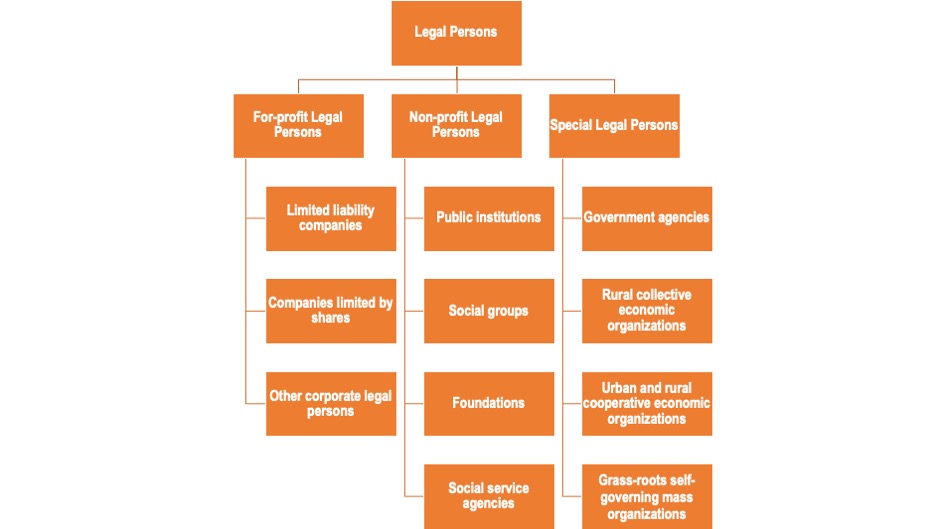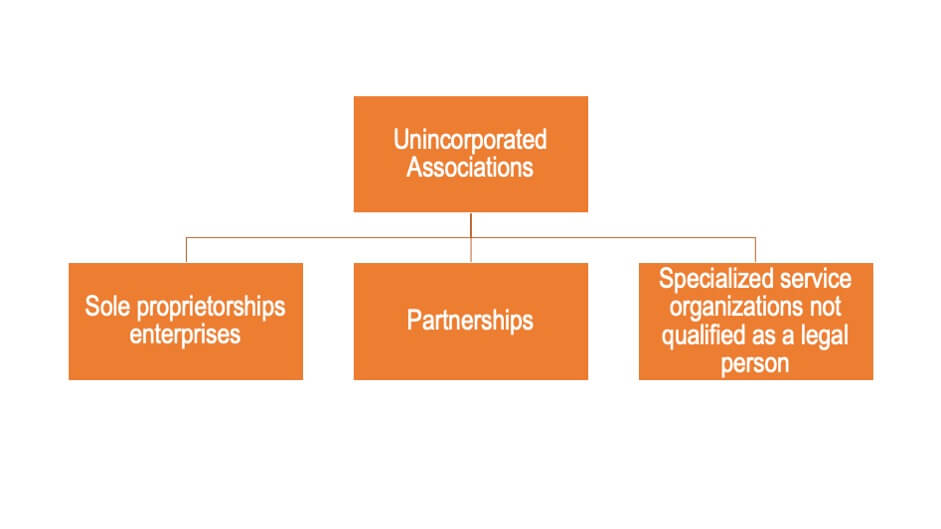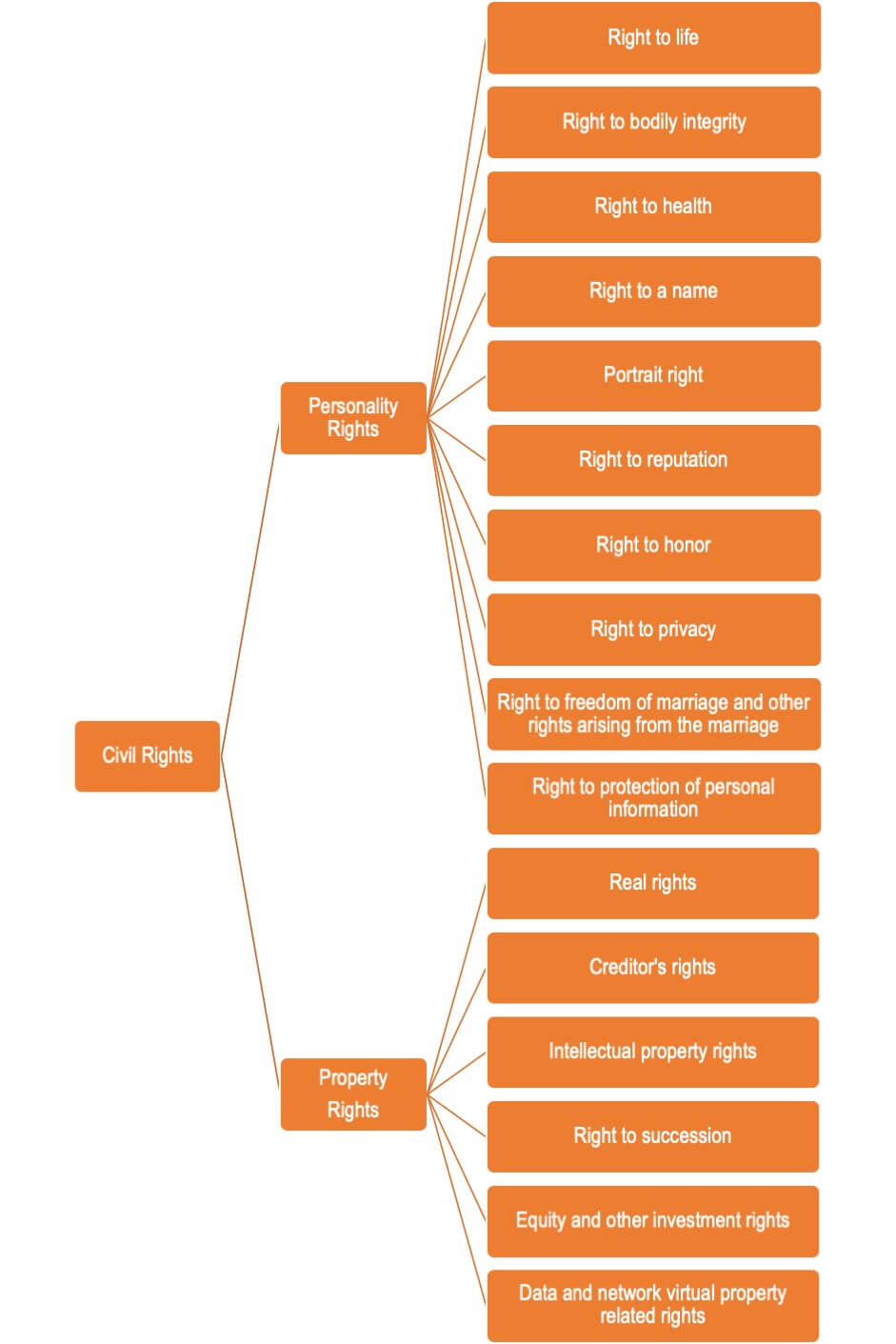China promulgated its first-ever Civil Code (民法典) in May 2020, which includes seven parts, i.e., General Principles, Real Rights, Contracts, Personality Rights, Marriage and Family, Succession, Liability for Tort, and Supplementary Provisions.
I. Part I General Principles
“Part I General Principles” is divided into ten chapters: Basic Provisions, Natural Persons, Legal Persons, Unincorporated Associations, Civil Rights, Civil Juristic Acts, Agency, Civil Liability, Limitation of Action, and Calculation of Periods.
We have selected some noteworthy points as follows:
1. Capacity for civil rights
A natural person shall have the capacity for civil rights as from birth until death, may enjoy civil rights and shall assume civil obligations in accordance with the law.
Where the protection of interests of the fetus, such as inheritance and acceptance of gifts, is involved, the fetus shall be deemed to have the capacity for civil rights. However, if the fetus is dead at birth, his/her capacity for civil rights does not exist from the beginning.
2. Adults and minors
A natural person over the age of 18 is an adult. A natural person under the age of 18 is a minor.
Parents shall be obligated to raise, educate, and protect their minor children. Adult children shall be obligated to support, assist, and protect their parents.
3. Capacity for civil conduct
An adult has the full capacity for civil conduct, and may perform civil juristic acts independently.
A minor who has reached the age of eight (i.e. from eight to eighteen) is a person with limited capacity for civil conduct, and shall be represented by his/her agent ad litem or obtain consent or retroactive acknowledgment of his/her agent ad litem in the performance of civil juristic acts.
A minor under the age of eight is a person without capacity for civil conduct, and shall be represented by his/her agent ad litem in the performance of civil juristic acts.
4. Civil subjects
Civil subjects include natural persons, legal persons, and unincorporated associations. Legal persons and unincorporated associations can be further divided into the following types:


5. The types of rights of civil subjects are as follows

6. Civil juristic acts
A civil juristic act shall be the act of a civil subject to establish, change, or terminate a civil juristic relationship through the manifestation of intent.
A civil juristic act is valid if it meets the following conditions:
(1) The actor has the relevant capacity for civil conduct;
(2) The intention expressed is authentic;
(3) Such act does not violate the mandatory provisions of laws and administrative regulations or the public order and good morals
7. Limitation of action
In general, the limitation of action for civil subjects to apply to the court for the protection of civil rights is three years.
The limitation of action shall run from the date when the obligee knows or should have known that his/her rights have been infringed upon and who the obligor is.
Where the laws provide otherwise on the limitation of arbitration, such provisions shall prevail; if there are no such provisions on the limitation of arbitration, the provisions on the limitation of action shall prevail.
II.Part II Real Rights
“Part II Real Rights” of the Civil Code has 20 chapters, which are divided into five subparts: General Provisions, Ownership, Usufruct, Security Interests, and Possession.
We have selected some noteworthy points as follows:
1. Registration of immovables
The State practices a unified system of registration with respect to the immovables. Obligees and interested parties may apply for consulting and duplicating the registered information, and the registration authority shall provide such materials accordingly.
2. State-owned property
The property owned by the State as is provided for by law belongs to the State, that is, the entire people. The State Council shall exercise the ownership of State-owned properties on behalf of the State.
These properties include:
(1) mineral resources, waters and sea areas;
(2) uninhabited sea island;
(3) urban land;
(4) natural resources such as forests, mountains, grasslands, wastelands and tidal flats, except where they belong to the collectives as prescribed by law;
(5) resources of the wildlife owned by the State as prescribed by law;
(6) resources of the radio-frequency spectrum;
(7) cultural relics owned by the State as prescribed by law;
(8) assets for national defense;
(9) infrastructures such as railways, highways, power facilities, telecommunication facilities, and oil and gas pipelines owned by the State as prescribed by law;
(10) the immovables and movables under the direct control of government departments;
(11) the immovables and movables under the direct control of institutions sponsored by the State, and;
(12) State-invested enterprises.
3. Collectively-owned property
Properties owned by a collective as prescribed by law shall be collectively owned by the members of this collective.
Collective-owned properties include:
(1) land, forests, mountains, grasslands, wastelands, and tidal flats that are owned by the collective as prescribed by law;
(2) buildings, production facilities, irrigation and water conservancy facilities that are owned by the collective;
(3) the educational, scientific, cultural, public health and sports facilities that are owned by the collective; and;
(4) other immovables and movables owned by the collective.
4. Privately-owned property
Any individual person is entitled to enjoy ownership of such immovables and movables as his/her lawful incomes, houses, articles for daily use, tools of production, and raw and semi-finished materials.
The State, the collective, and the individual may, according to the law, invest to establish companies with limited liability, companies limited by shares, or other enterprises.
5. Ownership
Owners of immovables or movables shall be entitled to possess, use, benefit from and dispose of the immovables or movables according to law.
The owner has the right to establish usufructs and security interests on his/her own immovables or movables.
6. Usufruct
A usufruct refers to the right of the obligee to possess, use, and benefit from the immovables or movables owned by others, but the right to dispose of such properties is not included.
Organizations and individuals can possess, use, and benefit from state-owned or collectively-owned natural resources according to the law, that is, organizations and individuals can be usufructuaries of state-owned property. For example:
(1) Farmers of the rural collective economic organizations can obtain the right to the contractual management of collectively-owned rural lands, that is, the right to carry out agricultural production on the land;
(2) Organizations and individuals can obtain the ownership of state-owned construction land, that is, the right to construct buildings on the land and enjoy ownership thereof.
For more info about “right to land contractual management” (土地承包经营权), please read an earlier post“China’s Legal Framework on Rural Land”.
For more info about property rights relating to land and housing in Chinese cities, please read an earlier post “China's Legal Framework on Urban Land”.
The usufruct solves the land contradiction of China: the State or the collective owns the land, while individuals need the land. That is, although the usufructuary is not entitled to the ownership of the land, it can use the land, to some extent, as the landowner.
7. Security interests
Unless otherwise stipulated by law, the holder of security interests shall have the priority in having his/her claim paid if a debtor defaults or if the conditions for enforcement of the said interests, as agreed upon by the parties concerned, arise.
Security interests include interest obtained from mortgage, interest acquired through pledge and lien.
III. Part III Contract
“Part III Contract” has 29 chapters in total, which are divided into three subparts: General Provisions, Typical Contracts, and Quasi-contracts.
The “General Provisions” provides for the conclusion, effectiveness, performance, alteration, termination, liability for breach of contracts.
The “Typical Contracts” provides for 18 typical contracts, such as sales contracts, lease contracts, technology contracts, and contracts of partnership.
The “Quasi-contracts” provides for two circumstances: negotiorum gestio and unjust enrichment.
We have selected some noteworthy points as follows:
1. Contracts and applicable laws
A contract is an agreement between civil subjects to establish, change and terminate the civil juristic relationship.
When the contract does not fall under any of the types provided for by the “Typical Contracts” of “Part III Contracts”, the “General Provisions” can be applied to the contract, and the relevant provisions of “Typical Contracts” or the most similar contract-related provisions of other laws can be referred to.
The parties may agree on the applicable law of the contract in accordance with the law. However, Chinese laws shall apply to the contracts to be fulfilled in the territory of China for Chinese-foreign equity joint ventures, Chinese-foreign contractual joint ventures, and Chinese-foreign cooperation in exploring and exploiting natural resources.
2. Conclusion and effectiveness of contracts
The parties may, when making a contract, use written form, verbal form or any other form.
"Written form" means any form which renders the information contained in a contract capable of being reproduced in a tangible form such as a written agreement, a letter, a telegram, a telex, or a facsimile.
Any electronic data that can show, in a tangible form, the contents that it specifies through electronic data exchange or e-mail and can be accessed for reference and used at any time shall be deemed as a written form.
If the parties enter into a contract in the form of a contract instrument, the contract is formed at the time when both parties affix their signatures, fingerprints or seals thereto. A contract legally formed shall become effective upon its formation, except as otherwise provided for by the law or agreed by the parties.
3. Termination of contracts
The parties may agree on the cause for termination of the contract by either party. When the cause occurs, the party with the right to terminate may terminate the contract.
In addition, under any of the following circumstances, the contract may be dissolved unilaterally even if the parties have not so agreed:
(1) It is impossible to achieve the purpose of the contract due to force majeure;
(2) Any party expressly states, or indicates through its conduct, that it will not perform its main debts prior to the expiration of the performance period;
(3) Any party delays in performing its main debts and fails to perform the same within a reasonable period after being urged to do so;
(4) Any party delays the performance of its debts, or has other violations, rendering it impossible to achieve the purpose of the contract;
(5) Other circumstances prescribed by law.
4. Statutory and agreed liability for breach of contract
(1) Statutory liability for breach of contract
Where any party fails to perform its contractual obligations or the performance thereof is not in line with the agreement, it shall bear the liability for breach of contract such as continuous performance, taking remedial measures or compensating for losses.
(2) Agreed liquidated damages or damages
In addition to the statutory liability for breach of contract, the parties may also agree that when one party breaches the contract, it shall pay a certain amount of liquidated damages to the other party as appropriate to the seriousness of the breach, and may also agree on the calculation method of the amount of damages caused by the breach of contract.
If the agreed amount of liquidated damages are lower than the losses caused by the breach of contract, the court or the arbitration institution may increase the amount of liquidated damages at the request of the parties; if the agreed amount of liquidated damages are excessively higher than the losses actually incurred, the court or the arbitration institution may lower them as appropriate at the request of the parties.
IV. Part IV Personality Rights
“Part IV Personality Rights” is divided into 5 chapters: General Provisions, the Right to Life, the Right to Bodily Integrity and the Right to Health, the Right to a Name, the Portrait Right, the Right to Reputation and the Right to Honor, as well as the Right to Privacy and the Protection of Personal Information.
We have selected some noteworthy points as follows:
1. Personality Rights
Personality Rights refer to the right to life, right to bodily integrity, right to health, right to a name, portrait right, right to reputation, right to honor, right to privacy, and other rights enjoyed by civil subjects.
If the civil subject is a natural person, he/she also enjoys other personality rights and interests generated from personal freedom and personal dignity.
Personality rights shall be protected by the law, which shall not be infringed upon by any organization or individual.
Personality rights shall not be renounced, assigned, or inherited.
2. The Right to Bodily Integrity
A person with full capacity for civil conduct shall have the right to decide on his/her own to voluntarily donate his/her human cells, human tissues, human organs, or remains in accordance with the law. No organization or individual may force, cheat, or induce others for such donation.
Purchasing or selling human cells, human tissues, human organs, or remains in any form shall be prohibited.
Anyone who engages in medical and scientific research activities related to human genes or human embryos shall abide by laws, administrative regulations, and relevant regulations of the State, and shall not endanger human health, violate ethics or damage public interests.
3. Sexual Harassment
Sexual Harassment is stipulated in the second chapter: the Right to Life, the Right to Bodily Integrity, and the Right to Health. Where a person conducts sexual harassment to another person in the forms such as verbal remarks, written language, images, physical behaviors in violation of his/her will, the victim shall have the right to request the person to bear civil liability according to the law.
Entities such as organs, enterprises, and schools shall adopt reasonable measures on prevention, acceptance, and handling of complaints, investigation and disposal, among others, to prevent and curb sexual harassment by making use of official powers and affiliation, etc.
4. The Portrait Right
A natural person enjoys the portrait right. Without his/her consent, the right holder of portrait work shall not use or make public the portrait of such a person by means of publication, reproduction, issuing, lease, exhibition, etc.
However, if it is to reasonably conduct certain acts provided for by laws, it may be possible without the consent of the holder of portrait right.
5. The Right to Reputation
Except for the specific circumstances provided for by law, if the person conducts news reports, public opinion supervision, and other acts for the public interest, which affects the reputation of others, he/she shall not bear civil liability.
Civil subjects may inquire about his/her own credit rating according to the law; if he/she finds that any credit rating is improper, he/she has the right to raise an objection and request necessary measures such as corrections or deletions. The credit evaluators shall verify the objection promptly and, if the claim is substantiated, shall take necessary measures in a timely manner.
6. The Right to Privacy
A natural person shall enjoy the right to privacy. No organization or individual may infringe upon the right to privacy of any other person by spying, intrusion, disclosing or publishing the relevant information or by any other means.
Personal information about natural persons shall be protected by laws.
Personal information refers to all kinds of information recorded by electronic or otherwise that can be used to independently identify or be combined with other information to identify a specific natural person, including the natural person’s names, date of birth, ID numbers, biometric information, addresses, telephone numbers, e-mail address, health information, whereabouts, etc.
The processing of personal information shall first obtain the consent of the natural person or his/her guardian, and shall not violate laws, administrative regulations, or the agreements of both parties.
The processing of personal information includes the collection, storage, use, processing, transmission, provision and disclosure of personal information, etc.
An information processor shall not divulge or tamper with the personal information that is collected and stored by him/her. Without the consent of the natural person, the information processor shall not illegally provide the personal information of such a natural person to any other, except for the information that has been processed so that the specific person cannot be identified and that cannot be recovered.
V. Part V Marriage and Family
“Part V Marriage and Family” is divided into five chapters: General Provisions, Marriage, Family Relations, Divorce, and Adoption.
We have selected some noteworthy points as follows:
1. Only a man and a woman can apply for marriage registration. The Civil Code does not provide that same-sex partners can apply for marriage registration.
2. The marriageable age shall not be earlier than 22 years old for men, and shall not be earlier than 20 years old for women.
3. The husband and wife shall have an equal status in marriage and family, and both husband and wife have the right to use his/her name.
4. The properties that acquired during the existence of the marriage shall be the common property of the spouses and shall be commonly owned by the spouses.
However, the following properties shall be the personal properties of the husband or the wife:
(1) the properties that belong to one party before marriage;
(2) compensation or indemnity obtained by one party for a personal injury;
(3) the properties that belong to only one party as determined by a will or by a contract of gift;
(4) the daily necessities of one party.
5. The husband and wife have the right to inherit each other’s properties. Parents and children have the right to inherit each other’s property.
6. Children born out of wedlock shall have equal rights as children born in wedlock.
7. Parents are obliged to raise minor children. Adult children are obliged to support parents who are unable to work or have difficulty in providing for themselves.
8. Methods for divorce include divorce by registration and divorce by litigation.
(1) Divorce by registration: if the spouses both intend to get divorced voluntarily, they should apply for divorce registration in person to the marriage registration authority.
(2) Divorce by litigation: if only one party requires divorce, he/she may directly file a divorce lawsuit in a people’s court.
9. In the mechanism of divorce by registration, in order to prevent the spouses from applying for divorce out of impulse, the Civil Code sets a 30-day “cooling-off period” (冷静期) for the first time.
It is worth noticing that the “cooling-off period” here is the name given by the public, but not a legal concept.
Under this circumstance, the procedures for divorce by registration are as follows:
Step 1, applying for divorce: the spouses apply to the marriage registration authority for divorce registration.
Step 2, the “cooling-off period”: within 30 days from the date that the marriage registration authority receives the application for divorce registration (the “cooling-off period”), either party may withdraw the application for divorce registration.
Step 3, applying for divorce certificate: if neither of the spouses has withdrawn the application during the cooling-off period, then within 30 days upon the expiration of the cooling-off period, both spouses can apply to the marriage registration authority for issuing the divorce certificate. Failure to apply the divorce certificate during the stipulated time shall be regarded as the withdrawal of the divorce registration application by the spouses.
Many argue that this new regulation for divorce registration is very unfavorable for women who are treated inappropriately in their family, for the husband can withdraw the application unilaterally during the cooling-off period after his wife has finally persuaded him to get divorced, which makes it more difficult for women to get rid of a failed marriage.
Moreover, some commentators believe that this provision will make more people have to resort to divorce by litigation, thereby significantly increasing the number of relevant lawsuits.
10. In a divorce by litigation, the court shall first mediate between the spouses to try to prevent the divorce.
However, after review, if the court considers that there is an irretrievable breakdown of marriage and the mediation is failed, the divorce shall be granted.
11. The husband shall not apply for a divorce when the wife is pregnant or within one year after the birth of the child or six months after the termination of gestation, unless the divorce is raised by the wife, or the people’s court deems it necessary to accept the divorce application made by the husband.
12. An adopter with no child may adopt two children, while an adopter with children can only adopt one child.
13. If a person who has a spouse intends to adopt a child, the husband and wife shall adopt him/her together.
If a person without a spouse intends to adopt a child of the opposite sex, the age difference of the adopter and the adoptee shall be more than 40 years.
14. Foreigners may adopt children in China, but they need to go through legal procedures.
VI . Part VI Succession
“Part VI Succession” is divided into four chapters: General Provisions, Statutory Succession, Testamentary succession, Legacy, and the Disposition of the Inheritance.
We have selected some noteworthy points as follows:
1. Succession begins at the death of a decedent. After the succession has commenced, the inheritors shall handle the inheritance of the decedent according to the rules of statutory succession. However, if there is a will or a legacy-support agreement, the inheritors shall handle the inheritance according to such will or legacy-support agreement.
2. The rules for statutory succession are as follows:
(1) Men and women are equal in the rights of succession.
(2) Inheritance shall be inherited in the following order of priority: the first-order inheritors including spouses, children, and parents; second-order inheritors including siblings, grandparents, and maternal grandparents.
(3) After the succession has commenced, the first-order inheritors shall inherit to the exclusion of the second-order inheritors. If there are no first-order inheritors, the second-order inheritors shall inherit.
(4) Inheritors in the same order shall, in general, inherit in equal shares.
(5) Children include children born in wedlock, children born out of wedlock, adopted children, and stepchildren in a maintenance relationship. They have equal status.
(6) Parents include biological parents, adoptive parents, and step-parents having a maintenance relationship. They have equal status.
(7) Siblings include siblings with the same parents, half-siblings, adopted siblings, as well as step-siblings in a maintenance relationship. They have equal status.
3. Testamentary succession refers to that a natural person makes a will in accordance with the methods prescribed by law to dispose of personal properties and may appoint an executor of the will. If there are several wills and their contents contradict each other, the last will shall prevail.
4. A legacy-support agreement refers to an agreement signed by a natural person with an organization or individual other than an inheritor. According to the agreement, the organization or the individual shall assume the obligations to take care of the life of the natural person and handle the work related to his/her death as well as the funeral. Based on performing the obligations, the organization or the individual may enjoy the right to legacy.
5. Any inheritance which is left with neither an inheritor nor a legatee shall be owned by the State and used for public welfare undertakings.
6. An inheritor shall pay off the taxes and debts that the decedent should pay according to the law within the limit of the actual value of the inheritance obtained.
VII. Part VII Liability for Tort
“Part VII Liability for Tort” can be divided into three subparts, ten chapters in total. The ten chapters are General Provisions, Damages, Special Provisions on Subjects of Liability, Product Liability, Liability for Motor Vehicle Traffic Accidents, Liability for Medical Malpractice, Liability for Environmental Pollution and Ecological Damage, Liability for Ultrahazardous Activities, Liability for Harm Caused by Domesticated Animals, and Liability for Harm Caused by Buildings or Objects.
We have selected some noteworthy points as follows:
1. Liability for Tort and Faults
The liability for tort can be divided into three categories according to whether the perpetrator is at fault:
(1) Fault liability: if the perpetrator infringes upon the civil rights and interests of others due to the fault and causes damage, it should bear the liability for tort.
(2) Presumed fault liability: if it is presumed that the perpetrator is at fault according to law, and the perpetrator cannot prove otherwise, it shall bear the liability for tort.
(3) Strict liability: if a perpetrator shall assume the tort liability according to the law for causing damages to the civil rights and interests of others regardless of whether the perpetrator is at fault or not, it shall be subject to the provisions.
2. Damages
Where the tortfeasor infringes another person and causes personal injury, the tortfeasor shall make the following compensation:
(1) The tortfeasor shall make compensation for reasonable expenses incurred for treatment and rehabilitation such as medical fees, nursing fees, transportation fees, nutrition fees, hospitalization meal subsidies, etc., and the decreased income due to lost time at work.
(2) If the tortfeasor caused a disability of the infringed, the tortfeasor shall also compensate the infringed for assistive equipment fees and disability compensation.
(3) If the tortfeasor caused the death of the infringed, the tortfeasor shall pay the infringed funeral expenses and death compensation.
(4) If the tortfeasor caused serious mental damage to the infringed nature person, the infringed shall have the right to claim compensation for mental damage.
In case of infringement upon another person’s property, the property loss shall be calculated according to the market price when the loss is incurred or by other reasonable means. If a person intentionally infringes upon the intellectual property of others and the circumstance is serious, the infringed shall have the right to request for the corresponding punitive damages.
3. Liability of Guardian
If a person without or with limited capacity for civil conduct causes damage to others, his/her guardian shall bear the liability for tort.
4. Liability of Network Service Providers
If a network service provider knows or should know that the network user uses its network service to infringe the civil rights and interests of others, but fails to take necessary measures, the net service providers shall bear joint and several liability with the network user.
5. The Liability of Product Producers and Sellers
Where the infringed has suffered damage due to a defect in the product, the infringed may seek compensation from the product producer or from the seller.
If the defect in the product is caused by the producer, the seller may, after paying compensation, claim the same from the producer. Where the defect in the product is caused by the seller, the producer may, after paying the compensation, claim the same from the seller.
6. Liability for Environmental Pollution
Where the environmental pollution or ecological damage causes damage to the infringed, the perpetrator of the pollution shall be presumed to bear liability for tort, unless the perpetrator proves the following circumstances:
(1) there are situations where the perpetrator can disclaim or mitigate liability as provided for by the law; or
(2) there is no causal relationship between its action and the damage.
7. Liability for Falling Objects
Where an object thrown from a building or an object dropped from a building causes damage to others, the tortfeasor shall bear tort liability according to law.
However, if the specific tortfeasor cannot be determined upon investigation, the user of the building who may have caused harm shall make compensation unless he/she can prove that he/she is not the tortfeasor.
* * *
The English translation of the PRC Civil Code is currently available for pre-order on China Justice Observer. If you are interested in a pre-order, please contact Meng Yu via e-mail at meng.yu@chinajusticeobserver.com. The PRC Civil Code of 110,123 Chinese words in total are translated into English, and the English translation (estimated at 60,000 words) is priced at US$ 4400. We will provide the English translation and the English-Chinese version within 3 months.
Contributors: CJO Staff Contributors Team







